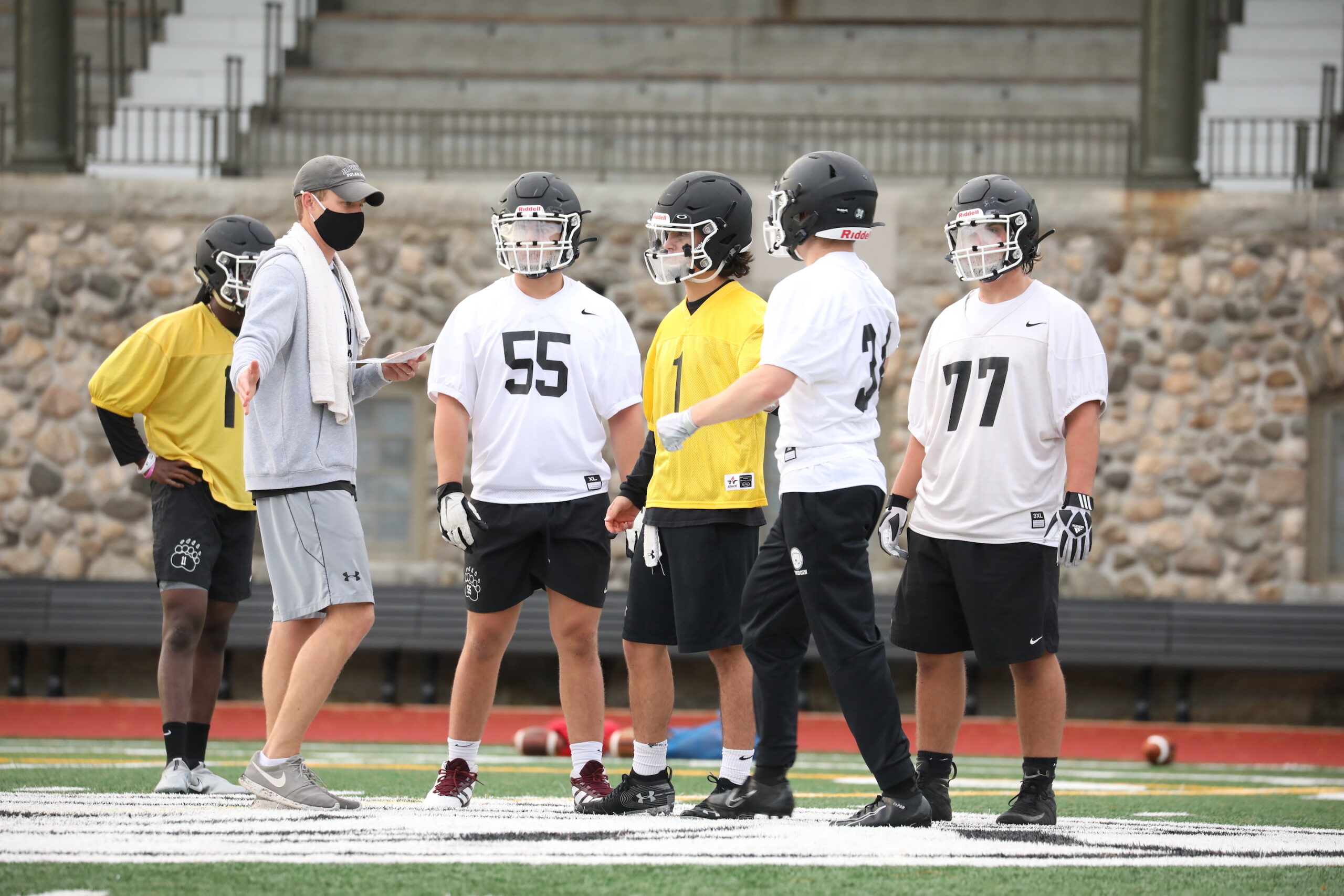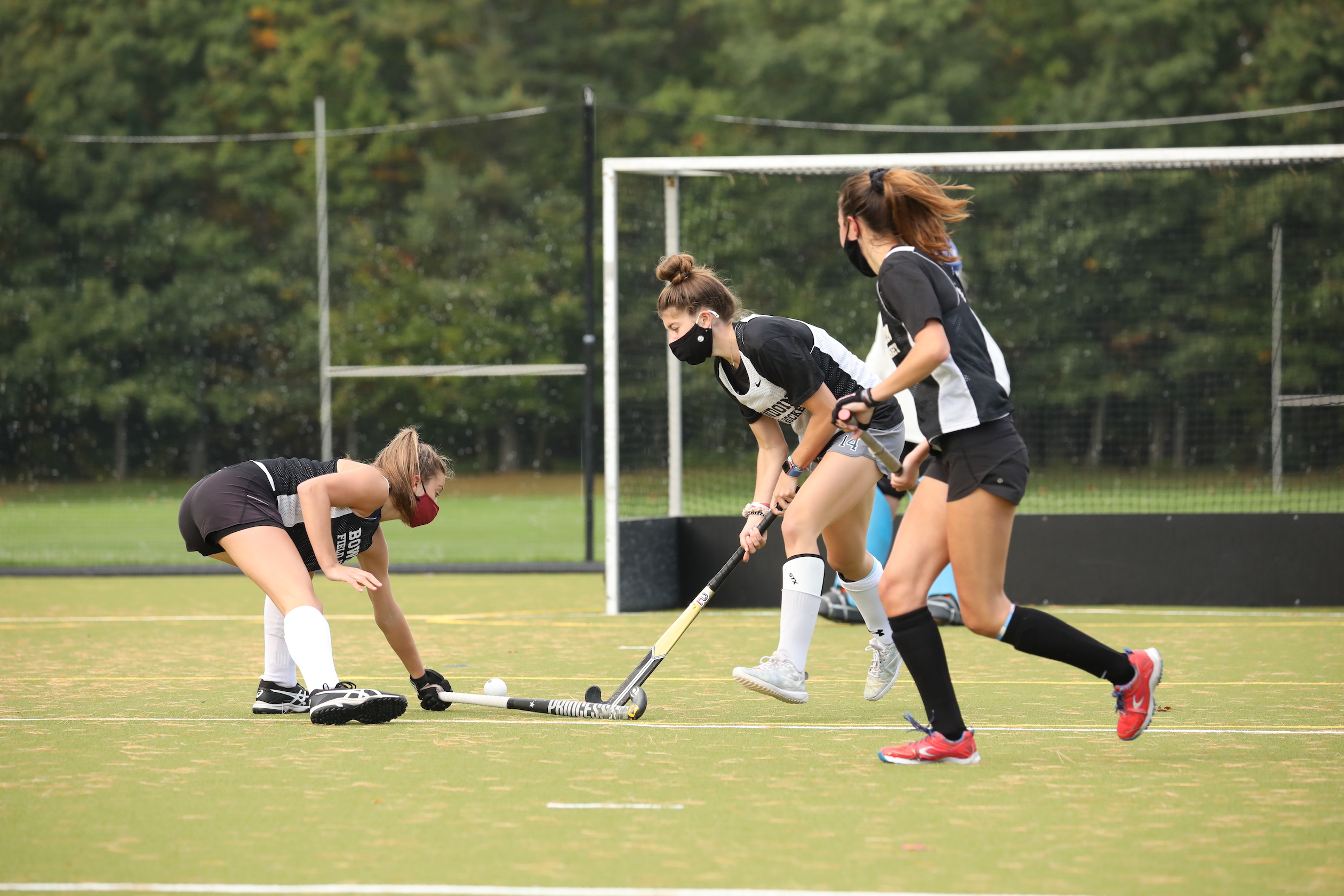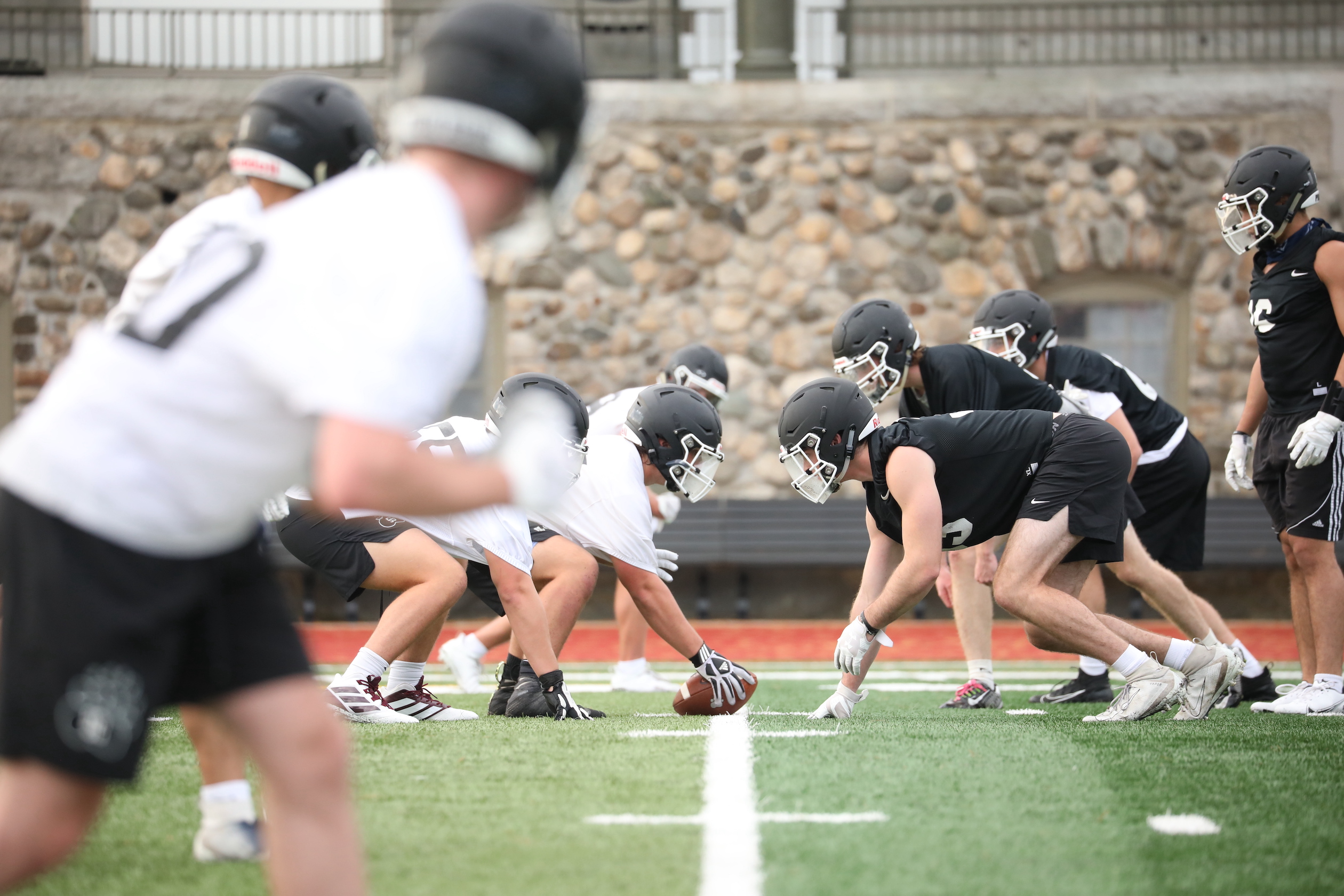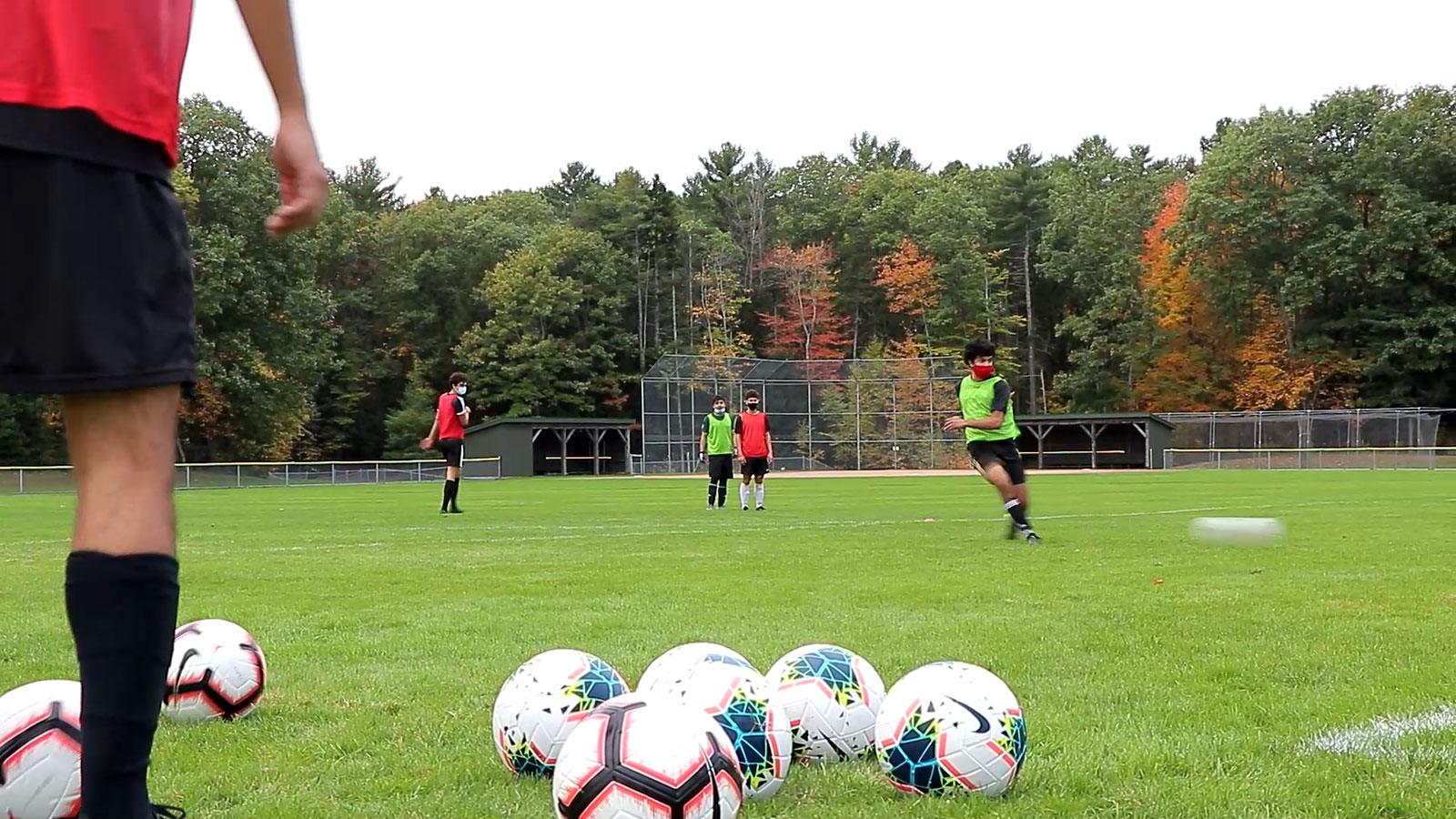Adjusting and adapting: virtual athletics satisfies some, but not all
December 4, 2020
 Courtesy of Brian Beard
Courtesy of Brian BeardThroughout the fall semester, Bowdoin athletics has been forced to “adjust and adapt” in response to the new challenges presented by the novel coronavirus (COVID-19). Despite grappling with geographically divided teams, a lack of competition and Zoom fatigue, athletes and coaches alike were pleasantly surprised by their teams’ ability to provide a meaningful and engaging athletic experience, but long for the return to an in-person season.
“We challenged ourselves to do these new and creative things, and the athletes really had a fantastic attitude about the whole thing,” Nordic Ski Head Coach Nathan Alsobrook said in a phone interview with the Orient. “In spite of limitations and concerns, we had very productive training, and we had a lot of fun doing it.”
Although conference competition was canceled for the fall season, teams were still able to hold regular practices for on-campus students in compliance with guidelines set by the Center for Disease Control and Prevention and the State of Maine, thanks to Bowdoin’s comprehensive testing protocol.
“To not have the competition is devastating, especially because the last season we played, we were national champions,” Women’s Rugby Coach Mary Beth Mathews said in a Zoom interview with the Orient. “But, that said, we could practice.”
For some athletes, such as Angela McKenzie ’23, a member of the women’s cross country and track teams, the semester has been meaningful in many ways, but the competition is an important aspect of the sport that she feels she is currently missing out on.
“[The semester is] not fulfilling in an athletic sense, in the sense that you get four years in athletics,” McKenzie said in a Zoom interview with the Orient. “Its most fundamental form of competition has been taken away.”
Jordin Young ’24, a first-year football player, was pleasantly surprised by the athletic opportunities on Bowdoin’s campus this fall.
 Courtesy of Brian Beard
Courtesy of Brian Beard“[Bowdoin] still allowed us to practice, which I didn’t think they would let us do,” Young said in a Zoom interview with the Orient. “Obviously we couldn’t have real games, but I think it was as close as possible to what we could have done [in a typical semester].”
Because teams could hold practices on campus, many athletic coaches turned their attention to bolstering the athletic experience for on-campus students.
“We were lucky to have eight team members on campus,” Alsobrook said. “So we were actually lucky to have in-person practices, and that was really our main focus this fall.”
Cassidy Donohue ’21, co-captain of the rowing team, anticipated that finding new members would be the hardest part of this semester, so she was pleasantly surprised when recruitment went smoothly.
“I think what ended up happening was that there were a lot of first years who really wanted to get involved,” Donohue said in a Zoom interview with the Orient. “Our roster right now is sitting at 105, which is bigger than it’s ever been.”
With no competitions to prepare for, coaches could be more flexible with their coaching styles and practice design.
“We focused on a lot of things we wouldn’t usually focus on otherwise,” swimmer Olivia Kim ’24 said in a Zoom interview with the Orient. “[Our coach] filmed all of us to work on [our] technique, and our practices were mostly based on learning new terms that he uses instead of just trying to go fast.”
Coaches were able to broaden their perspective around athletics, recognizing that the goal is not necessarily always to be competitive but to stay healthy during such a stressful and uncertain time.
“We recognize the value in letting students do what they can do and not putting anything mandatory on them,” said Mathews. “[Among] on-campus and off-campus [athletes], some have really stuck with their strength programs, and others have done their own thing.”
McKenzie also noted the change in coaches’ goals when it came to the workouts, specifically for the cross country team.
“[Our coach] tried his best to give us workouts as often as he could,” McKenzie said. “We’d end up getting like two or three a week, maybe, but it was always, ‘Here’s my recommendation for what you should do.’ Generally, we would just try to build up a base for the spring season if we have one. Trying to stay healthy was the biggest thing.”
 Courtesy of Brian Beard
Courtesy of Brian BeardMathews echoed this sentiment, emphasizing to her student-athletes that, to her, the goal is to make it through this tough semester with strong mental health.
“We really stressed physical health and exercise for your mental health,” Matthews said.
Off-campus members of the swim and dive team found unique ways to participate in their sport, even if it wasn’t with the team. Men’s swim and dive captain Alex Burns ’21 said that, in addition to their dryland workouts provided by the coaches, which are accessed through their Microsoft Teams page, swimmers joined club teams in their areas.
“Our coaches have been working really hard so that those of us off-campus can follow along with the out-of-water component if we choose to do so,” Burns said in a Zoom interview with the Bowdoin Orient. “Pool access is obviously a little trickier…but any water time is good water time.”
With members scattered across the country, teams also focused on creating opportunities for on-campus and off-campus athletes to bond.
“Now it becomes the challenge of, ‘how do we get everyone connected with half the team virtual, and half of the team kind of scattered all around the place and some on campus and some in really random places?’” Donohue said. “And how do we get everyone on the same page without exhausting them through just tons and tons of Zooms?”
While Zoom fatigue was certainly a concern, some teams found success in their Zoom meetings, using them as a way to facilitate conversation and bond with team members.
“We get together, and we get on a Zoom, and then we all have to coordinate our backgrounds to make a cool picture,” Donohue said. “We’re currently in that competition, and I’m eager to win. We put a lot of effort into ours.”
Mathews said that Zoom has been important in keeping off-campus teammates connected.
“This is a close-knit, really wonderful team, and they missed each other, and they missed the sport a lot,” Matthews said. “They did the best that they could to stay connected through the team Zooms and the buddy groups.”
 Courtesy of Brian Beard
Courtesy of Brian BeardThis method of virtual connection, however, has not been successful for everyone.
“It is definitely weird in the sense that I don’t know more than half my teammates, other than through Zoom calls and just introducing ourselves very briefly,” baseball player Zac Borden ’24 said in a Zoom interview with the Orient.
Young felt the football team was in a similar situation.
“I’m not going to lie,” Young said. “I don’t really know any of the upperclassmen except for the two other quarterbacks in our group.”
Burns addressed that there isn’t an easy solution to the lack of in-person team bonding that the athletes have been facing.
“It’s a tricky one,” Burns said. “Team bonding is tough to achieve when it means committing the extra hour to intensely focusing on socializing. We have remote workouts, our coaches sent us dryland routines, and I think that’s about the best that the team can do.”
Despite limited interactions with their upperclassmen teammates, the shared experience allowed first-year athletes to develop deeper bonds with each other.
“I think it was really good for our [first-year] class, specifically, to really join together and form a good practice culture and good team bonding,” said Borden. “But, I definitely think that you have to be close with all your teammates, and we, unfortunately, kind of missed that [this fall].”

Comments
Before submitting a comment, please review our comment policy. Some key points from the policy: